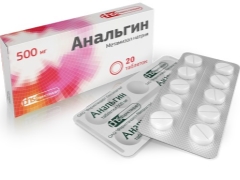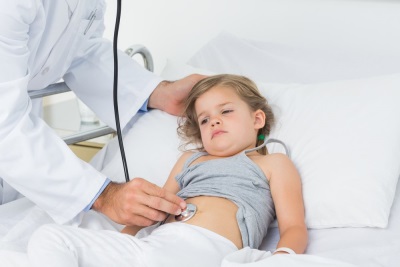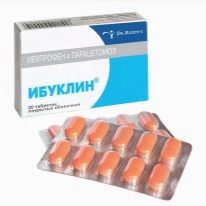Should I give analgin child?
Analgin is known for its properties to eliminate pain and lower body heat. For this purpose, this drug has long been used by adults, but is it possible to give it to children, from what age can treatment with Analgin and how much drug is allowed to give to children?
Composition and release form
Analgin is available in different dosage forms:
- Rectal suppositories. They are represented by white bullet-shaped candles (a cream or yellow shade or a white bloom is possible), packed in blisters of 5 pieces each. One pack contains 10 candles.
- Pills. Often they have white color and round shape. They are packaged in blisters or jars. One pack may contain 10, 20, 30 or more tablets.
- Solution for pricks. It is represented by sterile 25% or 50% liquid, which is injected intramuscularly or into a vein. Such liquid Analgin is sold in 1 ml and 2 ml ampoules. One pack contains 5 or 10 ampoules.
Metamizole sodium is the active substance in any of the drug options. In 1 ml of the injection form of Analgin may contain 250 mg or 500 mg of such compounds. The dosage of the active ingredient in one tablet is 500 mg. One candle contains 100 or 250 mg of metamizol.
In tablet form, additional substances are calcium or magnesium stearate, povidone, talc, microcrystalline cellulose and other compounds that help to create a solid tablet. In capsules of Analgin in addition to the active ingredient and sterile water, there are no other components. In addition to metamizole candles added solid fats.
How does it work?
Analgin is a representative of a group of non-steroidal antipyretic analgesics. The main action of Analgin is to block the conduction of pain impulses, so this medicine is especially in demand for different types of pain. He also noted a very strong antipyretic effect, but the anti-inflammatory effect of this tool is not very significant. If to compare with Analginom Nurofen or Paracetamol, the antipyretic and analgesic effect of Analgin will be higher.
Video instructions for using Analgin can be viewed in the video:
Can I give to children?
In the annotation to Analgin indicated that the drug can be used in children from 3 months, however It is permissible to prescribe this medication to children under one year only if there is serious evidence. Giving Analgin to babies of the first year of life without a doctor's appointment is unacceptable.
At the age of over 1 year, the drug is prescribed in suppositories (pediatric dosage), and the tablet form is used in children who can swallow tablets without any problems. Injections are prescribed only by a doctor in situations requiring quick relief from pain or fever. Usually, in childhood, Analgin injections are used only when the child is in critical condition.
Most pediatricians, among whom is the popular Komarovsky doctor, allow using Analgin to reduce the temperature or get rid of pain only as a temporary and fast-acting measure.. They prefer to use pain relievers and antipyretics in children with less dangerous side effects, such as paracetamol or ibuprofen.
Komarovsky about Analgin - in the video:
Treatment with Analgin, in the opinion of doctors, is possible with the ineffectiveness of other nonsteroidal drugs, as well as in the absence of other drugs at hand. If it is possible to use paracetamol or ibuprofen, then it is better for children to choose such medications.
What is dangerous for children?
The danger of such a medicine for children's health is due to its frequent side effects. Analgin often provokes allergies, which can manifest anaphylactic shock. Also, from taking Analgin temperature and blood pressure can drop too quickly and for a very long time.
The negative effect of this drug on blood formation, in particular, on the number of leukocytes in the blood, the result of which can be reduced to infectious and inflammatory complications, is also noted. In some children, treatment with Analgin provokes such severe side effects that it is fatal.
Because of the high risk of negative effects, doctors advise giving the child Analgin only in rare cases, if it is not possible to use safer drugs. In addition, it is recommended mainly single use of such a drug. This makes Analgin a reserve drug. Adults should not drink this medicine while carrying a baby or while breastfeeding.
Indications
Any form of Analgin can be used:
- With headache.
- With neuralgia and radiculitis.
- With toothache.
- With pains in the joints or muscles.
- With shingles.
- With injuries.
- When myositis.
- Burns
- With postoperative pain.
- With fever, which is caused by ARVI, bronchitis, pneumonia, insect bites and other causes.
Injectable form of the drug is often used for renal, intestinal or biliary colic, combined with drugs that have antispasmodic effect (for example, papaverine).
When you can not give a child
Treatment with Analgin is contraindicated in case of intolerance to its active compound. In addition, this drug is not prescribed, if the blood test showed inhibition of blood formation processes, as well as in case of hepatic or renal failure.
In no case should Analgin be used for severe abdominal pain, if the child has not been diagnosed. This is often a symptom of a serious illness, so eliminating pain can “smear” the clinical picture and prevent timely treatment.
Very careful to give analgin when low pressure blood, trauma, allergic diseases and bronchial asthma. If the child has a fever when taking Analgin, hemorrhages appear, the oropharyngeal mucosa is inflamed, or the blood test results change, the treatment stops immediately.
Instructions for use
- Tablets due to the negative impact on the gastrointestinal mucosa are advised to drink either with meals or immediately after a meal. The drug is taken 2 or 3 times during the day so that there is a break of at least 4 hours between doses.
- An enema is recommended before administering the suppositories to make the medicine work more effectively. If the child does not have problems with defecation, the suppository can be put immediately after the baby is naturally emptied. The candle is gently injected into the rectum, after which the little patient should stay in bed for at least half an hour.
- Injection Analgin children younger than a year is introduced only into the muscle. The drug can not be pricked intracutaneously or subcutaneously, as this can lead to local irritation and inflammation of the skin.
- Analgin is injected into a vein only in medical institutions, controlling breathing, blood pressure and pulse of a child. The solution during such injections should be slow (maximum 1 ml per minute), and the child must lie.
- Intramuscular injections can be done at home. The drug is injected into the thigh or shoulder at the place where the muscles are closest to the body surface. Introduction to the gluteal muscles is not recommended due to the high risk of getting under the skin.
- Use of Analgin should be non-durable. If the medicine is used for pain, the treatment lasts up to 5 days, and when using the drug as an antipyretic, it is recommended to limit it to 3 days of therapy. If you need a longer reception, your child is given a blood test.
Dosage
The dosage of the tablet and injectable form of Analgin for children younger than 8 years is better to calculate by weight. The weight of the child in kilograms is multiplied by 5-10 mg. This determines the daily dose, which is divided into 2 or 3 doses. In this case, single doses should not exceed the following recommendations:
Children aged 2-3 years | 50 to 100 mg |
4-5 years old child | From 100 to 200 mg |
6-7 years old children | 200 mg |
Children over 8 years old | 250-300 mg |
At the age of over 14 years, from 250 to 500 mg of Analgin can be given at a time.
Candles Analgin appointed in this dosage:
Up to a year | 50 mg (half of the candle 100 mg) |
From year to 3 years | From 100 to 200 mg (1-2 suppositories 100 mg per day) |
From 4 to 7 years | From 200 to 400 mg (2-3 suppositories 100 mg or 1 suppository 250 mg) |
In 8 years and older | From 200 to 600 mg (1-3 suppositories 250 mg) |
Overdose
Too high dose of Analgin can lead to nausea, abdominal pain, shortness of breath, vomiting, drowsiness, noise in the ears. The patient may have a sharp decrease in temperature and blood pressure, an increase in pulse rate, a decrease in urine volume. In severe poisoning, impaired consciousness, acute impairment of the liver and kidneys, seizures, hemorrhages, and other negative symptoms are possible.
If the drug was taken in a very high dosage inside, vomiting should be provoked, and after washing the stomach to give drugs from the group of sorbents and laxatives. It is also recommended to drink plenty of water. With a strong overdose of the child hospitalized, eliminate seizures and other acute disorders, and prescribe hemodialysis.
Terms of purchase and storage
Analgin sold by prescription. The average cost per pack of 20 tablets is 35-40 rubles. Store the drug should be in a dry place where the temperature will not exceed +25 degrees. In this case, the medicine should not be freely available for a small child.

Shelf life of tablets and ampoules - 5 years, candles - 3 years. The medicine from the opened ampoule should be used immediately. Storage is allowed no longer than 15 minutes. If the drug is left open longer, the contents of the ampoule should be poured.
Reviews
On the use of Analgin in children there are different reviews. Some mothers are satisfied with the use of this drug in a child, noting that Analgin helped to reduce persistent temperature or very quickly eliminated severe pain. Other parents complain of side effects and consider treatment with Analgin in childhood as an unreasonable risk.
Combination with other medicines
- Taking Analgin with other drugs with an analgesic effect will lead to an increase in their toxic effect, so side effects will appear to a greater extent.
- Analgin will be more toxic if you use allopurinol or antidepressants with it.
- The effect of treatment with Analgin is reduced when this drug is combined with barbiturates, and when prescribing tranquilizers or sedatives, it will, on the contrary, increase.
- Taking Analgin will enhance the therapeutic effect of hypoglycemic agents, glucocorticoids and indirect anticoagulants. It can be prescribed with dexamethasone, warfarin, prednisone and other drugs.
- The injection form of Analgin is not allowed to be mixed in the same syringe with any other medicine.
- To lower the temperature, Analgin is often combined with Suprastin and But shpa. Other variants of the mixture, which is called lytic, can be a combination Analgin with Dimedrol and papaverine.
- Using a mixture of Paracetamol and Analgin in the fight against fever can be dangerous because of the risk of severe hypothermia and collapse. Paracetamol enhances the toxic effects of Analgin, so their combination is not recommended.
Analogs
Instead of Analgin for severe pains, Baralgin M, Spazgan, Pentalgin N, Spazmalgon, Tempalgin and other agents can be used. Each of these drugs has its own contraindications and restrictions, so the choice of analgesic is better to do with a pediatrician.
To replace Analgin as an antipyretic for children, you can use:
- Paracetamol. The drug is available in syrup, tablets, ampoules, suppositories and suspensions. It is prescribed from 1 month.
- Panadol. Paracetamol is the active compound of this medication. Such candles and suspension prescribed from 3 months.
- Efferalgan. This is another medicine based on paracetamol, produced in candles and syrup. May be appointed from 1 month.
- Nurofenom. The main component of this drug is ibuprofen. The drug is represented by candles and suspension, administered from 3 months of age.
- Ibuklinom. As part of this drug, paracetamol is combined with ibuprofen. The medicine is a pill and is used in the treatment of children over 3 years old.
- Nimesil. This medicine on the basis of nimesulide is prescribed from the age of 12 and is available in powder, packaged in sachets.
























